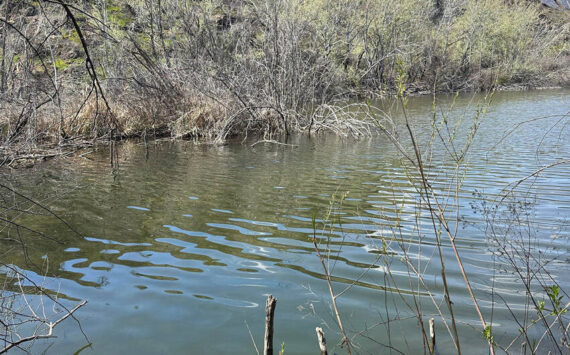Trying to avoid reoccurrence of last year’s problem
OROVILLE – Jeff Bunnell, the owner of property in the east Oroville area has approached the city council to ask the city for help in trying to prevent Tonasket Creek from flooding. He warned that time was running out to stop a repeat of last February when the creek jumped its banks.
Last year flooding did several thousand dollars worth of property damage to Bunnell and others whose property is near the creek, which flows down from the nine mile area. Years of sediment, vegetation and debris have filled the channel, leaving no where else for the creek to go when flood conditions from quickly melting snow and rain occur, according to Bunnell.
Chris Branch, Oroville’s director of community development, updated the council on what attempts were being done.
“We are really working to find a way to prevent another occurrence like we had last year in the short and long term. In the short term we’d like to dig a channel in stream bed… the real challenge is not the permitting, it is subjecting ourselves to lawsuits if the creek jumps out and causes damage to someone else’s property… whether it is our fault or not,” said Branch
He added that the stream bed was elevated more than it should be and material needed to be removed to try and keep it from flooding in the short term. The city experienced major flooding of the Bud Clark Ballfields last year and the clean up took a lot of the city crews time. On East Oroville Road two bridges were affected, both have major sediment build up under them. The county road department spent a lot of effort fixing the Chesaw Oroville Road and East Oroville Road during and after the flooding.
“All that outwash collects at the bottom of the steam when it makes that big turn at our ballfields. The county said it would participate in the short term but only wants to limit its work to those to roads’ right of way. Otherwise they don’t seem to want to get too involved.
Brunell said he used to be able to walk upright under the bridge near his property, now he would nearly need to crawl to get under it.
A long term solution to the problem would be to dig a channel back to the native and make a 50 foot buffer zone, moving the dikes back on each side of the creek so the creek would have somewhere to flow into before it dug new channels, according to Branch.
Branch and Bunnell will try and get all the adjacent property owners to sign off on an agreement to allow access to their property so that a new channel can be dug and other work to remove vegetation and debris is done.
“There are approximately 10 landowners and ourselves and with the county that’s eleven. If the property owners participate in the short term I think there’s money to be found for the long term out there,” said Branch. “A Fish and Wildlife biologist walked it and she said she has a plan that would fit right into our comprehensive plan.”
Branch and Bunnell will continue to talk with landowners with property adjacent to the creek. Branch said that a local excavator has agreed to do at least some of the work to try and dig a deeper channel to prevent flooding in the short term.
See Related Story here





